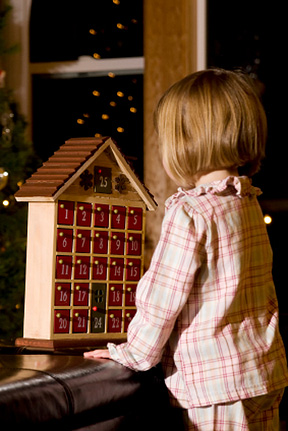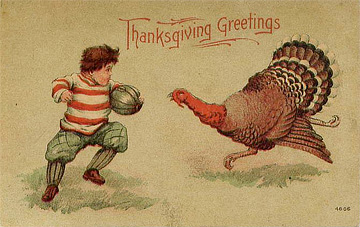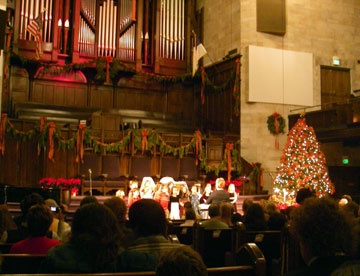This coming Sunday is the first day of Advent.
If you’ve been reading my blog for more than a year, you know that I
generally make a big deal out of Advent. If you’re new to my blog,
however, you may wonder why I bother. My goal in this post is to explain
what Advent is. My next post in this series will make the case for
taking Advent seriously.
When is Advent?
Advent is a season in the Christian year that lasts for
about four weeks. It begins four Sundays before Christmas and ends on
Christmas Eve, thus there is some variation in its length. If you’re
unfamiliar with the idea of Christian seasons, you might find helpful a series I’ve written called: Introduction to the Christian Year. I should mention that Eastern Orthodox Christians do not recognize
Advent per se, but have a longer season that is rather like Advent.
Their Nativity Fast begins in the middle of November and is a season for repentance and abstinence.
In our secular American celebration of Christmas, the Christmas season (or holiday
season, ugh) begins in the weeks prior to Christmas Day. Generally,
this season starts in early December, though retailers have a bad habit
of beginning Christmas in November (or even October). In my rule book,
you shouldn’t listen to Christmas music or turn on Christmas lights
until after you’ve finished the Thanksgiving turkey . . . at the
earliest. Of course outside of my immediate family, nobody follows my
rules . . . especially retailers.
So Advent overlaps with what is usually thought of in American culture as the Christmas season. But its beginning and ending are well defined, and its themes are quite a bit different from what is commonly associated with secular Christmas celebrations.
What is Advent?
 The Christian season of Christmas actually
The Christian season of Christmas actually
begins on Christmas Eve and lasts for twelve days, ending on January 6.
(No, the twelve-day season of Christmas did not start with the song. It
was the other way around.) The time before Christmas is Advent, a season of preparation for Christmas.
Christians prepare for celebrating the birth of Jesus by remembering
the longing of the Jews for a Messiah. In Advent, we’re reminded of how
much we ourselves also need a Savior, and we look forward to our
Savior’s second coming even as we prepare to celebrate his first coming
at Christmas. The word “Advent” comes from the Latin word adventus, which means “coming” or “visit.” In the season with this name, we keep
in mind both “advents” of Christ, the first in Bethlehem and the second
yet to come.
If
you’re unfamiliar with Advent, I expect it might feel odd to think of
the weeks before Christmas as something more than Christmastime. For
most of my life, Advent played very little role in my pre-Christmas
consciousness. As a child, I did have Advent calendars: sturdy,
decorative paper displays with 25 little “windows,” one of which I
would open each day of December leading up to Christmas. Sometimes Advent calendars are made of wood and feature twenty-five little boxes, each containing some little treasure (see photo). My Advent
calendar was a way to whet my appetite for Christmas, not that I needed
much help to get ready for my favorite day of the year, mind you.
I
loved Christmas when I was young, partly because it celebrated the birth
of Jesus, but mostly because it was a giant party in which I received
lots of presents. In a sense, the Christian observance is a bit like my
boyhood Advent calendars, though it has a much more serious purpose.
It’s meant to get us ready, not for a present-opening party, but for a
transformational celebration of the birth of Jesus.
What Colors Are Used in Advent?
There
are a few other things about Advent, besides its themes, that you might find odd if you’re
unfamiliar with the season. The strangest might be the Advent color scheme. We
associate Christmas and the weeks leading up to it with typical
Christmas colors: red, green, white, silver, and gold. Advent, on the
other hand, features purple (or dark blue) and pink. The purple/blue
color signifies seriousness, repentance, and royalty. Pink points to the
minor theme of Advent, which is joy. For many observers of Advent, the first, second, and fourth
Sundays of Advent are “purple/blue” Sundays. Only the third is a “pink”
Sunday. The pink, joyful color reminds us that, even as Advent helps us
get in touch with our sober yearning for God to come to us, we know that
he did in fact come in the person of Jesus.
Thus, our major-theme of waiting has a grace note of joy mixed in. If you’ve seen a
traditionally-colored Advent wreath will recognize the purple and pink
colors of this season (with the central, white, Christ-candle for
Christmas Eve/Day). But if you’re unfamiliar with Advent and happen to
attend a church service in early December in a church that recognizes
Advent, you might be startled to see lots of purple, a bit of pink, and
no red or green. (Many churches combine the colors of Advent and
Christmas, however, so visitors won’t be completely perplexed. Advent purists don’t approve of such a mix, but I think we need to be gracious in our response to the Advent traditions of others. )
Advent’s Growing Popularity
Advent doesn’t get much attention compared to
Christmas, though interest in Advent is growing steadily in many
churches and in many Christian homes. That’s not to say everybody is an
“Adventophile,” a lover of Advent, however. Some Protestants ignore
Advent because it isn’t taught in Scripture and because they associate
it with Roman Catholicism. Secular culture ignores Advent because there
isn’t much money to be made here. I suppose you might be able to make a
few bucks selling purple and pink candles, but this isn’t going to
thrill most retailers.
I think, however, there are lots of good reasons to pay
more attention to Advent, however. I’ll begin to explore these in my
next post in this series.
Advent Devotional Guide: Preparing for the Coming of Christ
I have written a devotional guide for Advent. It is based on
Scripture, and is meant to be used with an Advent wreath. This
devotional is simple and can be used in families with young children. It
can also be adapted for other uses, such as Advent-themed worship
services or personal devotions. You are welcome to download the Advent Devotional Guide and use it as you see fit.

